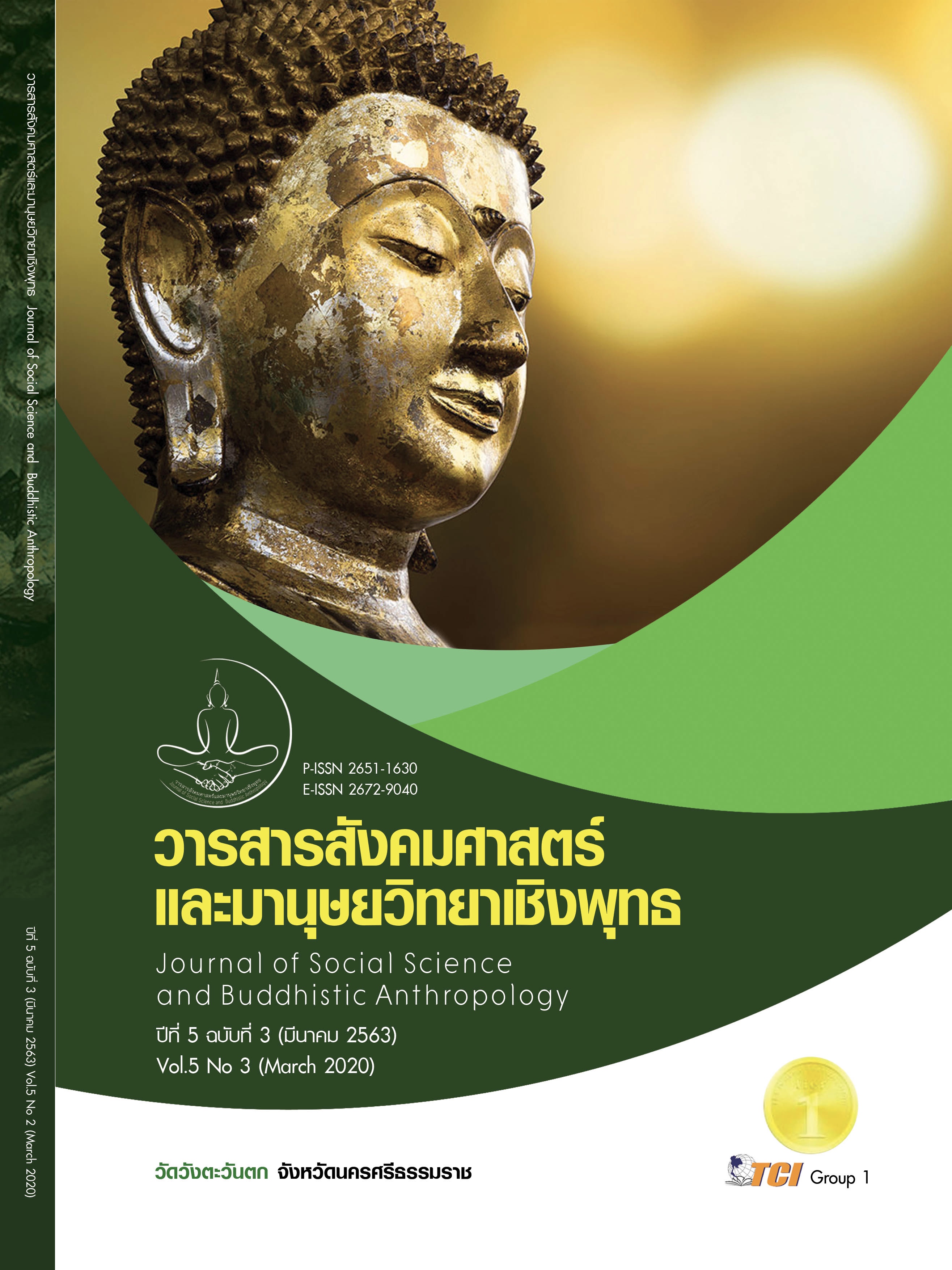THE GUIDELINES OF THE PRINCIPLES BUDDHIST APPLICATION FOR HAPPY PREPARATION TO THE AGING SOCIETY
Keywords:
Application, Buddhism, Preparation, Aging SocietyAbstract
This article has two purposes. 1) to study the Buddhist principles application for preparation to the happy aging society. 2) to develop guidelines of the Buddhist principles application for preparation to the happy aging society. It is a qualitative research which study from research documents, interviews and observations with the administrators and students of Suthep Subdistrict Municipality Aging School and Mae Hia Subdistrict Municipality Aging School In Chiang Mai, consisting of 8 people which were selected by purposive sampling. The results of the research revealed that : 1) the Buddhist principles application for preparation to the happy aging society is Dhamma : Phhu kar thrrm 4 or Chakrapha 4 is fair to have virtues of great assistance, create goodness, and develop life. These include (1) living in a suitable habitat and environment conducive to a happy life such as living in a peaceful place can be a rest Dharma practice, no noise and stay with good neighbors. (2) associating with faithful people and can choose good people. (3) setting oneself like, setting the mind to aim in the right direction and setting oneself in morality. Except to encroach others and observe the 5 precepts completely (4) Being a person who has done good deeds, such as making merit and offering food to monks or meditating. All are good behaviors. 2) The developing guidelines of the Buddhist principles application for preparation to the happy aging society can develop himself to have a good life by focusing on the threefold principles of dharma, namely, precepts, concentration and wisdom in order to develop in 4 areas, namely physical development, moral development, mental development and intellectual development. In addition, Buddhist principles application must be used together with the Tilakkhaña (the Three Characteristics) to understand the nature and bring peace and happiness.
References
กรมกิจการผู้สูงอายุ (ผส.) กระทรวงการพัฒนาสังคมและความมั่นคงของมนุษย์. (2562). สถิติผู้สูงอายุของประเทศไทย 77. เรียกใช้เมื่อ 31 ธันวาคม 2562 จาก http://www.dop. go.th/th/know/1/275#
โฆษิต ทิพย์เทียมพงษ์. (2560). ญี่ปุ่นรับมืออย่างไรกับ “สังคมคนแก่”. เรียกใช้เมื่อ 18 กันยายน 2560 จาก https://mgronline.com/japan/detail/9600000095683
เจริญ นุชนิยมและนายชินชัย แก้วเรือน. (2559). การประยุกต์ใช้หลักพุทธธรรมในกิจกรรมส่งเสริมสุขภาพผู้สูงอายุ วิทยาลัยพยาบาลบรมราชชนนี นครลำปาง. วารสารพุทธศาสตร์ศึกษา, 7(1), 11-24.
ประชาไทย. (2559). เกาหลีใต้หาวิธีผ่าทางตันประชากรเกิดน้อย - ผู้สูงวัยเพิ่ม. เรียกใช้เมื่อ 28 มีนาคม 2559 จาก https://prachatai.com/journal/2016/03/64942
พรทิพย์ เกยุรานนท์. (2561). การสร้างความสุขในผู้สูงอายุ : การใช้เวลาว่างของผู้สูงอายุ. เรียกใช้เมื่อ 16 ตุลาคม 2561 จาก http://www.thaistudies.chula.ac.th /2018/10/16/
พระพรหมคุณาภรณ์ (ป.อ.ปยุตฺโต). (2558). พจนานุกรมพุทธศาสตร์ ฉบับประมวลธรรม. (พิมพ์ครั้ง 30). กรุงเทพมหานคร : มูลนิธิธรรมทานกุศลจิต.
ภรณี ภู่ประเสริฐ. (2561). คนไทย 30% ยังไม่เตรียมพร้อมเข้าสู่วัยสูงอายุที่มีคุณภาพ. เรียกใช้เมื่อ 19 สิงหาคม 2561 จาก https://goodlifeupdate.com/healthy-mind/secret-trick/14460.html
มหาจุฬาลงกรณราชวิทยาลัย. (2539). พระไตรปิฎกฉบับภาษาไทย ฉบับมหาจุฬาลงกรณราชวิทยาลัย. กรุงเทพมหานคร: โรงพิมพ์มหาจุฬาลงกรณราชวิทยาลัย.
วสันต์ วิเชียร. (2560). หลักการมีส่วนร่วมในการดูแลผู้สูงอายุ ของชุมชนเทศบาลตำบลหนองหอย อำเภอเมือง จังหวัดเชียงใหม่. วารสารพุทธศาสตร์ศึกษา, 8(2), 81-93.
สำนักงานคณะกรรมการพัฒนาเศรษฐกิจและสังคมแห่งชาติ. (2558). ทิศทางของแผนพัฒนาเศรษฐกิจและสังคมแห่งชาติ ฉบับที่ 12. เรียกใช้เมื่อ 27 มิถุนายน 2562 จาก http://www.singburi.go.th/etc_files/แผนพัฒนาเศรษฐกิจแห่งชาติ12.pdf
Thaireform. (2562). ปี 64 ไทยมีคนชรา 13 ล้าน เข้าสู่สังคมสูงวัยสมบูรณ์ - เเนะรัฐเพิ่มอำนาจ อปท. เรียกใช้เมื่อ 27 มิถุนายน 2562 จาก https://www.isranews.org/ isranews-news/77916-news-779161.html








